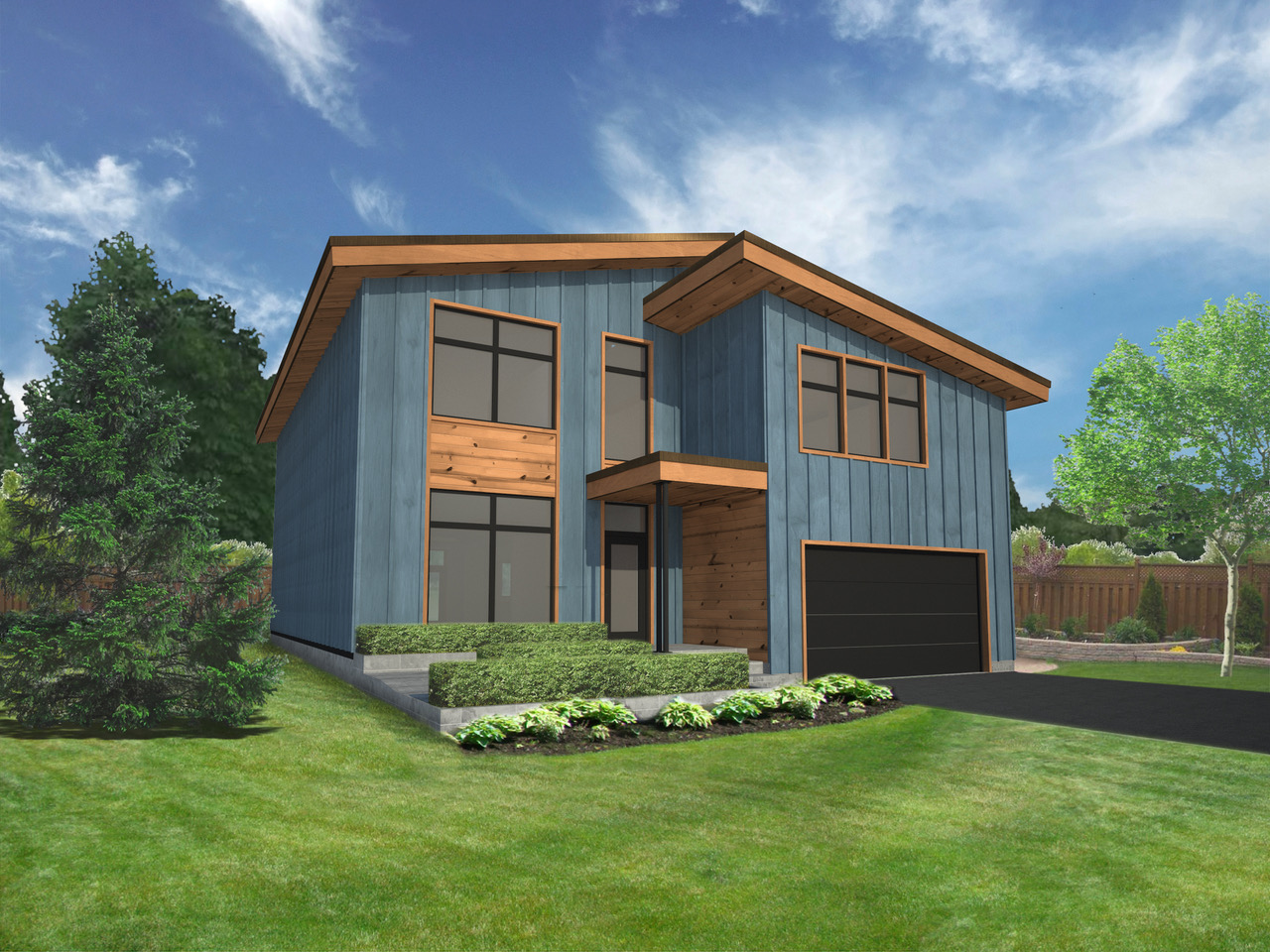
For their forward-thinking Risebrough Residence in North York, they wanted a home that would sip energy, endure for generations and remain comfortable at all times.
And Sustainable.TO, a Toronto firm specializing in sustainable architecture, had just what was needed – a version of their Toronto Method concept, which highlights their philosophy that a better building envelope is a result of placing the right amount, of the right materials, in the right place.
“Every client we work with has a unique set of needs and wishes,” says Paul Dowsett, principal architect at Sustainable.TO. “In this situation, we were able to deploy many of the technical solutions we’ve resolved with this project on a larger scale and utilized the ability to customize use and individual preference. That is something unique that can only be found when working directly with an architect.”
In the case of the Risebrough Residence, the architecture does the heavy lifting. The staggered rooflines accommodate high windows that admit daylight naturally. Convection currents passively vent warm, stale indoor air through the upper windows and draw in cooler, fresh air from the garden level.
To reduce energy demand, the home is wrapped in a thick blanket of insulation; while an air-tight building envelope reduces unwanted air leakage. Two fully-ducted energy recovery ventilators (ERVs) handle controlled ventilation, ensuring the fresh incoming air is efficiently preheated and humidified by the outgoing exhaust air. As heating and cooling loads have passively been reduced by 80 per cent over a typical home, the remaining heating requirements are handled by a hydronic in-floor radiant heating system powered by a super-efficient natural gas boiler.
Henry® Residential Building Envelope Systems® were chosen for the project because of the importance of utilizing a performance-based, integrated system to meet passive building requirements, helping maintain an air-tight, water-tight and weather-tight envelope that stops uncontrolled air leakage, while improving occupant comfort and energy efficiency.
As Sustainable.TO spokespersons like to say: “The home can literally be heated by a toaster.”
At the heart of the philosophy surrounding the Risebrough Residence is the Toronto Method. Dowsett says the concept continues to pique a lot of interest because of its simplicity.
“When we developed this system we weren’t trying to break the mold, but trying to push the ‘envelope,’” he says. “It’s about creating a better building envelope by placing the right amount of the right materials in the right place. The Toronto Method uses readily-available materials with which local builders are familiar.”
To demonstrate the buzz the Toronto Method has been creating within the building industry, Dowsett noted that Sustainable.TO is working with a consortium of international partner companies in the development of panelized, community-built homes.
They have developed modular building envelope panels that will deliver a well-insulated, air-tight, healthy home that can be built quickly by local trades and that will maximize the use of local materials. That way, housing can be provided for remote, or post-disaster, rebuilding of communities internationally. And that housing, using the principles of the Toronto Method, would be healthy, cost-effective, rapid-erect, reduce dependence on fossil fuel, withstand the effects of floods, earthquakes, and other disasters … and be quickly lived in, post-disaster.
“We have received a lot of recognition from our colleagues in the industry who share our belief that the green building industry needs to make a shift away from foam-plastic, petroleum-based insulation products,” says Dowsett.
“There is a commonly-held belief that ‘technology will save us’ from any threat humanity is faced with,” he says. “Unfortunately ‘technology’ is often used interchangeably with ‘gadgetry’ and there seems to be a trend of ‘throwing as many gadgets’ at a problem as possible.
“Sustainable.TO’s approach is to understand the underlying issues and propose a solution with as little complexity and as little material as possible. We truly believe in, and practice, the adage of ‘doing more with less.’
“In a world where ‘smart’ technology strives to make our lives easier, investing in complicated systems that are susceptible to failure is a risky proposition.
“Passive design is the future, and Sustainable.TO’s Toronto Method and Risebrough Residence are proof that ‘simple is the new smart.’”
Web / sustainable.to